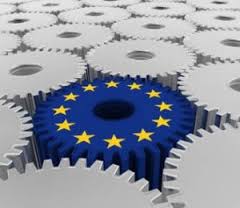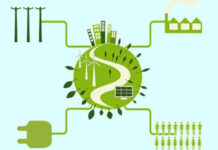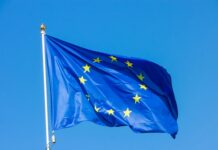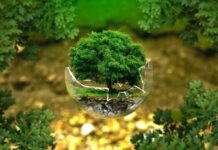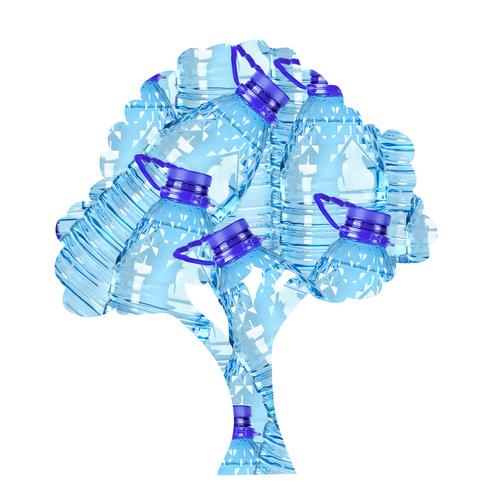
They may respond to numerous requirements without damaging the environment and, possibly, contributing to a growth in an innovative industry segment also in Italy. We talk about this with Andrea Di Stefano, Director of Special Projects and Business Communication at Novamont, a company operating since 1990 in the sector of bioplastics and biochemicals.
When we deal with the issue of the goods obtained from bioplastics, what range of products are we talking about?
We talk about the products of everyday life: from shopper bags and separate collection of organic waste to fruit and vegetable packaging, disposable dishes for food and beverages consumption to the products for personal care, bread storage coverings and even tires and mulching materials in agriculture. These solutions derive from the integration of the chemistry, the environment and agriculture by means of an efficient and sustainable use of renewable resources, transformed thanks to proprietary technologies which are the result of research aimed at the continuous improvement of performance and environmental profile of the products. I refer to the bioplastics of family MATER-BI and the entire range of their completely biodegradable and compostable applications, according to the most important international standards.
In terms of the technologies adopted for transformation of bioplastics MATER-BI, the goods obtained include films, thermoplastic formats, extruded and expanded plastic materials, molded components and additives. The essential components for the production of the family of bioplastics MATER-BI are starches and plant oils, which are not genetically modified and produced in Italy and Europe by means of traditional agricultural practices, on marginal lands that is not intended for crops with food-use.
The conflict between bioplastics and traditional agriculture is frequently emphasized…
The fact that currently in the EU only1% of the overall production of corn starch is used for the bioplastics and that on average only 15-30 liters of irrigation water are necessary to obtain renewable raw materials needed for the production of1 kg of MATER-BI shows that the impact on the foodstuffs production is extremely reduced and that the manufacturing does not entail any conflict with the agricultural activity.
Has your production chain shrunk in Italy? How do you assess the added economic activity?
Certainly, our chain has not shrunk in Italy, according to our vision of a “circular bioeconomy,” in which the principles of the bioeconomy are coupled with those of the circular economy. The bioeconomy, which in Europe generates a turnover of around 2,000 billion euros and employs more than 22 million people (9% of the EU’s total employment), encompasses the production of renewable biological resources and the transformation of such resources and the flows of value-added waste such as foodstuffs, fodders, bioproducts – such as our bioplastics – and bioenergy. The circular economy in turn runs counter to the model of production-consumption-disposal of the linear economy, in favor of a system in which the products maintain their added value as much as possible. There is no waste, because after a product ends its life, it is transformed into a new resource. According to the EU, each euro invested in research and innovation in the bioeconomy will generate an added value in the segment’s sectors of ten euros by 2025.
As for the production chain of biopolymers, according to the recent research of Plastic Consult, in 2014 the segment employed 195 operators (+28% compared to 2013), the total number of staff members was 1650 (+14% vs. 2013), and the overall turnover amounted to 400 million euros (+6%).
Can we consider the production of this material and occasion for redevelopment of disused land?
Yes, absolutely. Novamont has for years been involved in reconversion of industrial sites in crisis into biorefineries manufacturing biomaterials and bioproducts from renewable sources, which generates positive effects on the employment, the environment, the product profitability and integration with oil-based chemicals for their major specialization and competitiveness. The investments aimed at reindustrializing the important Italian sites that are disused or not competitive anymore and for the construction and commissioning of first in the world 4 flagship plants amount to about one billion euros. At the same time around 200 million euros have been earmarked for multidisciplinary research&development projects that involve universities and the research centers of excellence.
What is the percentage of disposal of your products and how are they disposed of?
The goods manufactured with bioplastics MATER-BI, compostable according to the international standard UNI EN 13 432, are 100% disposable in the organic waste treatment chain.
Do you apply efficient technologies (water reuse systems, cogeneration plants) in the plants?
Yes, we certainly do. All our plant have water recycling systems and we use renewable and green energy. In the plant in Bottrighe – to be commissioned soon – we will experiment a system of biodigestion with methane production.
Thinking in terms of the experience with Eataly at the EXPO or other similar ones, have you received feedback on the impact of the use of biodegradable cutlery and plates at large events?
The studies and research conducted with partners such as, for instance Slow Food and Eataly, have indicated the determining role of the use of dishes made of compostable bioplastics in the systems of separate waste collection at large events that reach over 80%, precisely thanks to the possibility of composting the leftovers of food eaten by means of MATER-BI dishes.
What is the average economic different between a biodegradable and non-biodegradable product?
From zero to three times as much, depending upon the applications.
How does the market respond to these products?
They arouse a great deal of interest, above all in the segment of applications for the separate waste collection (shopper bags and other bags) and it is increasing in the sector of the products for agriculture as well as the segment of and commercial foodservices and public catering.
What are the outlooks for 2016, more internal consumption or more exportation?
For obvious reasons, there are prospects for higher demand in Italy, but we are receiving important signals of growth in the countries such as the UK, Spain and France.
Per ricevere quotidianamente i nostri aggiornamenti su energia e transizione ecologica, basta iscriversi alla nostra newsletter gratuita
e riproduzione totale o parziale in qualunque formato degli articoli presenti sul sito.




